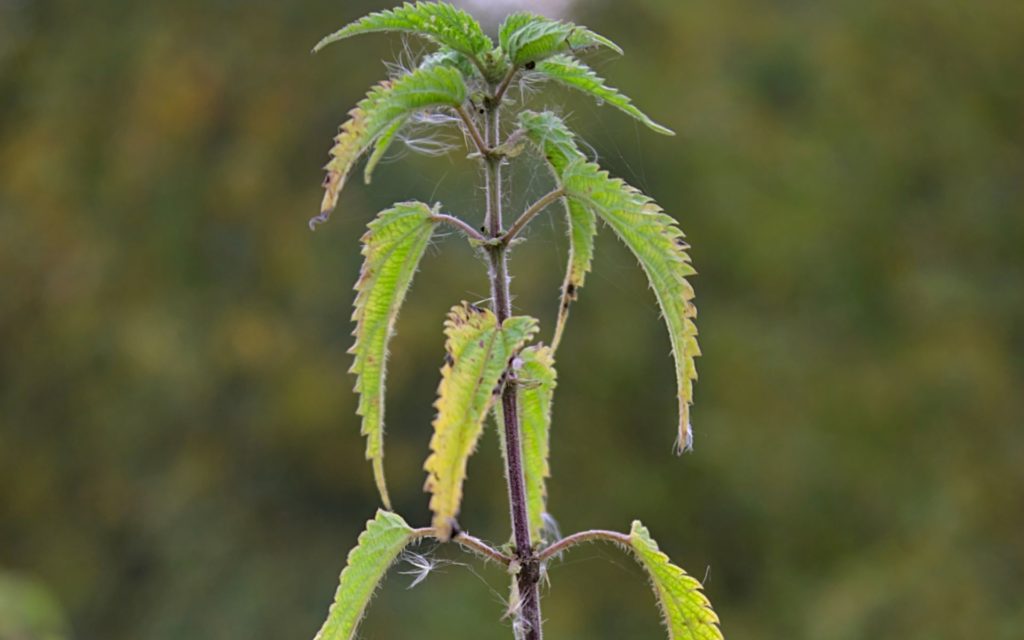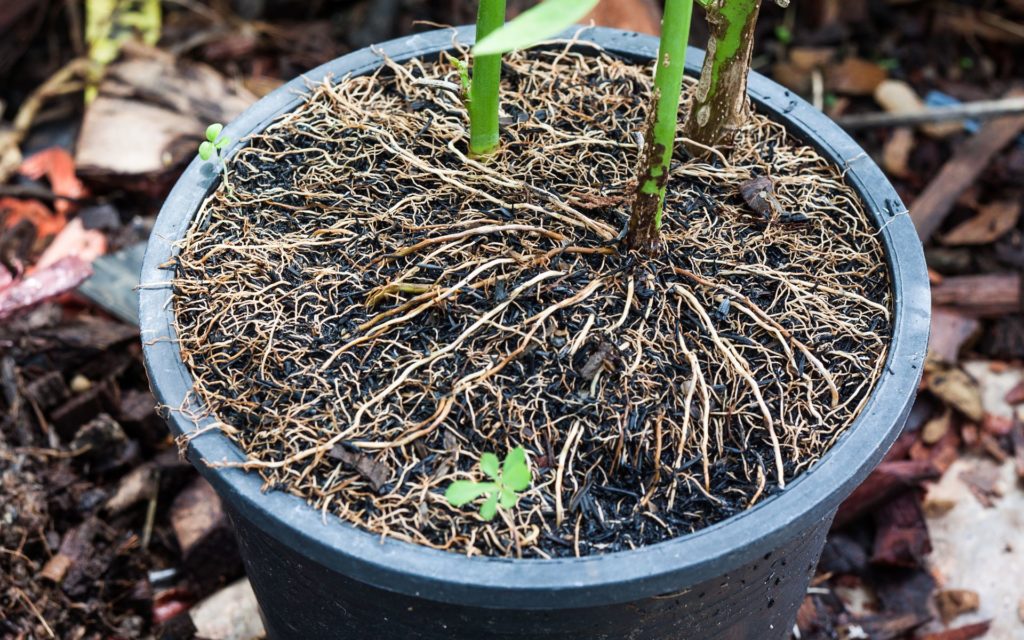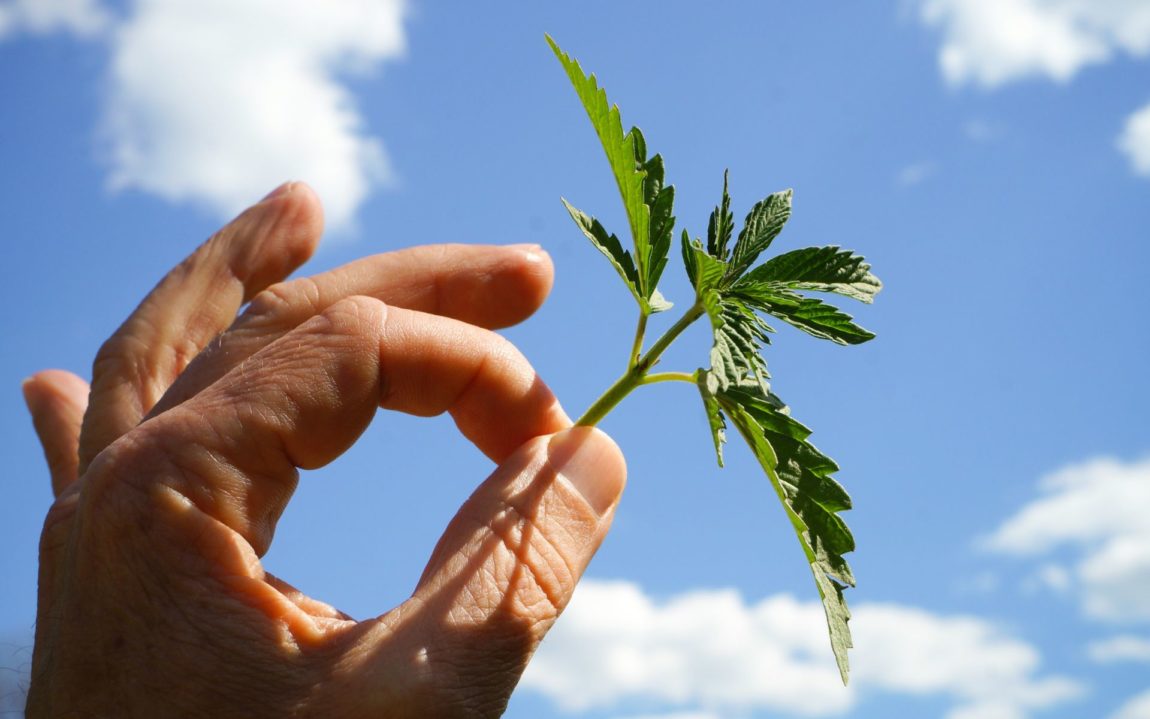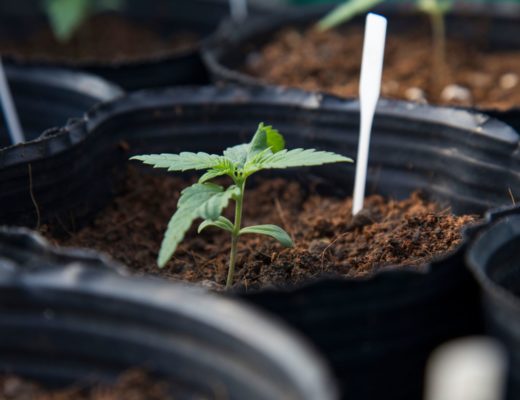Cannabis plants are very resilient, but even they can run into problems from time to time. One of the most common issues that growers face is problems with the roots. These problems can manifest in a variety of ways, including slow growth, different color leaves, and brown or slimy roots.
If you’re noticing any of these problems with your cannabis plants, it’s important to take action quickly in order to save the plant.
In this blog post, we’ll go over 7 early signs of cannabis root problems and how to fix them. Keep reading to learn more!
7 Early Signs of Cannabis Root Problems
With over a decade of experience growing cannabis, I’ve seen just about every root problem there is.
The following are the most common warning signs growers should watch out for:
- Leaves curl or cup inward
- Wilting stem or branches
- An extended period of slow or stunted growth
- Discolored leaves
- Overwatered soil
- Brown or slimy roots
- Rotten or musty smell from the base of the plant
Now that you know what to look for, let’s take a closer look at each of these issues and how to fix them.
1. Leaves curl or cup inward
Leaves that are curling or cupping inward is another common sign of early root problems. This issue is usually caused by one of two things: either the roots are not getting enough water, or they’re not getting enough oxygen.
If the roots are not getting enough water, the leaves will start to curl in order to prevent moisture loss. If the roots are not getting enough oxygen, the leaves will also curl in order to increase surface area and allow for better gas exchange.
Either way, this is a sign that your plant is under stress and is not able to function properly.
How to fix leaves that are curling or cupping inward:
If you’re noticing this problem with your plants, the first step is to check the soil moisture levels. If the soil is too dry, increase the frequency of your watering schedule. If the soil is too wet, however, you’ll need to let it dry out completely before watering again.
It’s also important to check the drainage of your pot or container. If the roots are sitting in water for too long, they could be suffocating and not getting the oxygen they need. Be sure to repot your plant into a container with drainage holes to avoid this problem in the future.

2. Wilting stem or branches
A healthy cannabis plant should have firm, rigid stems and branches. Although wilting stems and branches are usually due to external factors like heat or wind stress, they can also be a sign of something wrong with the roots.
In order to reduce losing too much water, the plant will start to wilt. If you see your plant wilting during the day, but it recovers at night, this is a good sign that the roots are healthy and are able to take up water from the soil.
However, if the plant is wilting all day and does not recover overnight, this is a sign that the roots are not healthy and need to be checked.
How to fix a wilting stem or branches:
Once you determine that the roots are the source of the wilting, the first step is to double-check your watering schedule. Make sure you’re giving your plant enough water, but not too much. Give the plant a few days to adjust to the new schedule, and then check again to see if the problem has been resolved.
If the wilting persists, you may need to repot your plant into fresh, moist soil. While the roots are exposed, you may want to remove any that look damaged or unhealthy. Once the plant is in its new pot, be sure to water it regularly and keep an eye on the soil moisture levels to avoid overwatering.
3. An extended period of slow or stunted growth
Depending on the strain, cannabis plants usually have a pretty fast and steady rate of growth. A plant should only slow or stop growing toward the end of its life cycle. Stunted growth at any other time is usually a sign of nutrients not being absorbed properly through the roots.
You can determine the cause by checking the feeding history and looking for any changes that might have coincided with the start of the stunted growth. If there is a nutrient deficiency, you’ll need to fertilize the plant accordingly. If there is an issue with the roots, however, you’ll need to take action to fix the problem.
How to fix slow or stunted growth:
The first step is to check the roots for any signs of damage or disease. If you find that the roots are healthy, the next step is to check the soil nutrients. If the soil is lacking in nutrients, you’ll need to fertilize the plant accordingly. Be sure to follow the directions on the fertilizer packaging and only apply as much as recommended.
If the problem persists, you may need to trim down the plant in order to encourage new growth. Remove any leaves or branches that are yellowing or dying, as well as any that are preventing light from reaching the lower parts of the plant.
Once you’ve trimmed the plant, be sure to stick to the appropriate watering and feeding schedule to encourage new growth.
4. Discolored leaves
Cannabis leaves are another great indicator of a healthy or unhealthy plant. Healthy leaves are typically a deep green color, while unhealthy leaves can range from yellow to brown and everything in between!
If you notice that the leaves on your plant are starting to change color, it’s important to take a closer look and determine the cause. Chlorosis, or yellowing of the leaves, is usually caused by a nutrient deficiency. If the leaves are brown or black, however, it’s likely that they were burned by too much fertilizer.
Leaf color can also be affected by other factors, such as light stress or temperature changes. If you’re not sure what’s causing the discoloration, it’s always best to err on the side of caution and take action to fix the problem.
How to fix discolored leaves:
If the leaves are yellow, the first step is to check the soil for a nutrient deficiency. If the soil is lacking in nutrients, you’ll need to fertilize the plant accordingly. Be sure to follow the directions on the fertilizer packaging and only apply as much as recommended.
However, for brown or black leaves, it’s likely that they were burned by too much fertilizer. In this case, you’ll need to flush the soil with clean water to remove any excess nutrients. Once the soil has been flushed, be sure to reduce the amount of fertilizer you’re applying to the plant.
Either way, it’s also important to check the lighting and temperature conditions to make sure they’re not stressing the plant. If the problem persists, you may need to trim down the plant in order to encourage new growth.
So far, the early signs of root problems we covered are noticeable from the exterior part of the plant. But there are also deeper, more difficult-to-spot issues that can arise below the surface. Most of the time, root problems that don’t show any surface symptoms are deadly to the plant.

5. Overwatered soil
Healthy cannabis roots are versatile and require a delicate balance of water and oxygen to thrive. All growers know the importance of a regular watering schedule. Not only does it ensure your plants are getting the hydration they need, but it can also provide an early sign of a possible issue with the roots.
If you’re following a consistent and appropriate watering schedule and you notice that the soil is always soggy or wet, this is a clear sign that the roots are not absorbing water as they should. This can be caused by a variety of diseases or pests, so it’s important to take action quickly.
How to fix overwatered soil:
If you think your soil is overwatered, the first step is to stop watering for a few days and let the soil dry out completely. Once the soil is dry, you can begin watering again, but be sure to water less frequently than before.
You may also want to consider repotting your plant into new, dry soil. Be sure to disinfect any tools or containers you use to avoid spreading disease.
6. Brown or slimy roots
All growers know the importance of inspecting their plants regularly, but sometimes it’s easy to forget about the roots. However, checking on the roots is just as important as examining the leaves and stems.
If you notice that the roots are brown or slimy, this is a sign of root rot. Root rot is caused by a variety of fungi and can quickly kill your plant if left untreated.
How to fix brown or slimy roots:
If you notice brown or slimy roots, the first step is to remove the plant from its pot and inspect the root system. If more than half of the roots are affected, it’s likely too late to save the plant.
However, if you catch the issue early enough, you may be able to save it by repotting into new, dry soil. You can also try using a root treatment product, but be sure to follow the instructions carefully.

7. Rotten or musty smell from the base of the plant
During your regular inspections, be sure to take a sniff of the soil around the base of your plant. A healthy plant should have a fresh, earthy smell. However, if you notice a rotten or musty smell, this is another early sign of root rot.
How to fix a rotten or musty smell:
If you notice a rotten or musty smell coming from the base of your plant, you should start with a quick visual inspection. Dig up some of the soil from around the base of the plant and check the lower part of the stem for browning or soft spots.
If you don’t see any visible signs of issues there, keep looking for other possible causes for the smell, such as overfed plants or problems with drainage.
As a last resort, you will need to carefully remove the plant from its pot and inspect the roots. Check if the smell is coming from the roots and if they show any signs of root rot. Remove any affected parts of the roots and repot with fresh and well-draining soil.
Conclusion
Every grower will eventually have to deal with some sort of root problem. Early signs can sometimes be difficult to spot, but if you know what to look for, you can nip the issue in the bud before it becomes a serious problem.
Keep an eye out for these early signs that point to possible problems with cannabis roots, and you’ll be on your way to keeping your plants healthy and happy.





No Comments